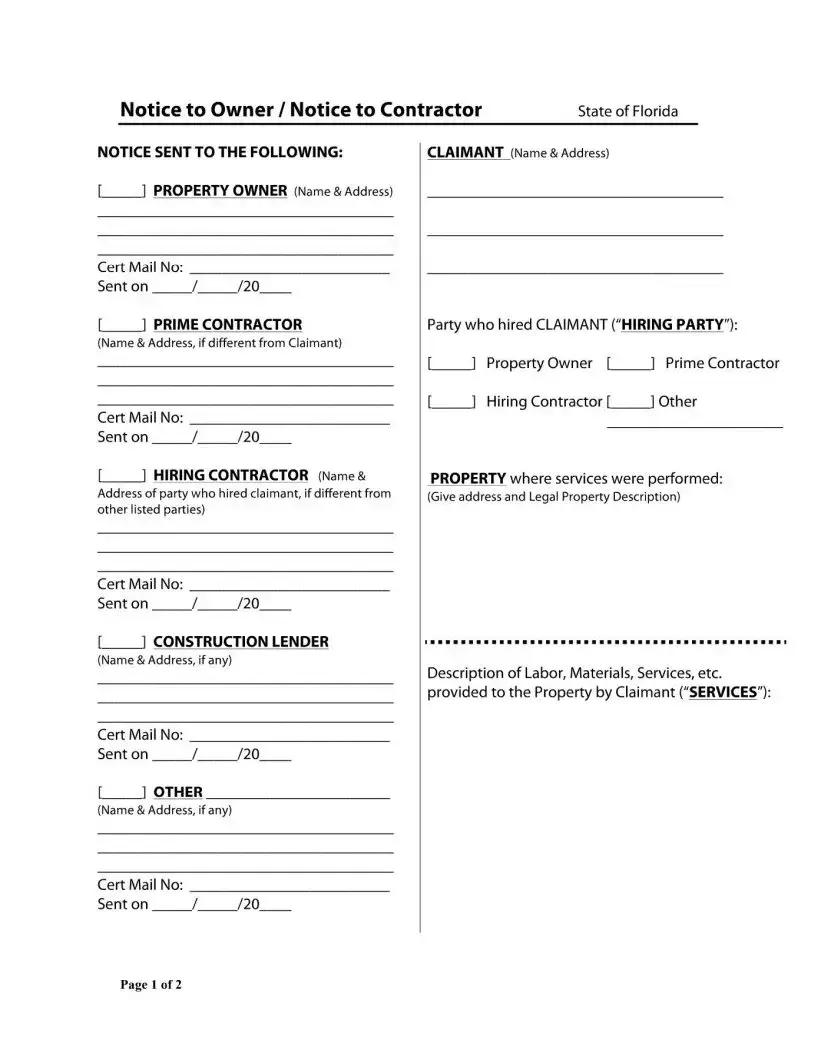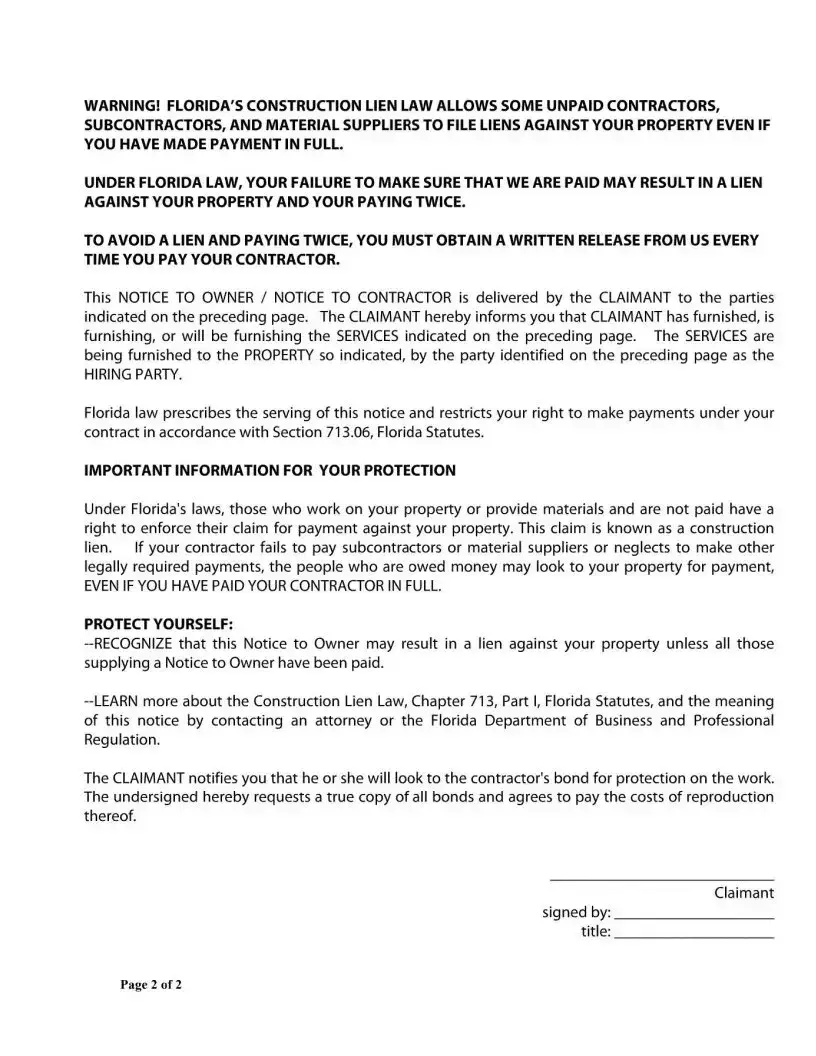The Notice to Owner form in Florida shares similarities with the Preliminary Notice, commonly used in many states. Both documents serve to inform property owners about the involvement of contractors, subcontractors, and suppliers in a construction project. By sending a Preliminary Notice, the claimant seeks to establish their right to file a lien should payment issues arise. This proactive approach helps protect the claimant's interests, just as the Notice to Owner does by alerting the property owner of potential claims against their property.
Another document akin to the Notice to Owner is the Mechanics Lien. This legal claim is filed by contractors or suppliers who have not been paid for their services or materials. The Mechanics Lien directly asserts a right to payment against the property itself. Like the Notice to Owner, it is a tool that allows claimants to safeguard their financial interests in a construction project, ensuring that they can seek compensation even if disputes arise later.
The Notice of Intent to Lien is also comparable to the Notice to Owner. This document serves as a formal warning to property owners that a lien may be filed if payment is not received. It is often sent before the actual lien is recorded, giving the property owner an opportunity to address any outstanding debts. Both documents aim to prompt action from the property owner to prevent further legal complications.
The Conditional Lien Waiver is another document that bears similarity to the Notice to Owner. While the Notice to Owner informs property owners about potential claims, the Conditional Lien Waiver is used to relinquish the right to file a lien under certain conditions, typically upon receipt of payment. This document helps protect property owners from future claims while also ensuring that contractors receive payment for their work.
The Final Lien Waiver is related but serves a different purpose. After payment is received, this document confirms that the contractor or supplier waives any future lien rights for the work completed. Like the Notice to Owner, it plays a crucial role in the payment process, ensuring that all parties understand their rights and obligations concerning payment and lien claims.
The Notice of Non-Payment is another document that is similar in function to the Notice to Owner. This notice is sent to inform parties involved in a construction project that payment has not been received. It serves as a formal communication that can lead to further actions, such as filing a lien. Both documents emphasize the importance of timely payments and the consequences of failing to fulfill financial obligations.
The Affidavit of Payment is also relevant in this context. This document is often used to affirm that all subcontractors and suppliers have been paid, providing assurance to property owners. Similar to the Notice to Owner, it helps clarify the payment status and can prevent disputes related to unpaid claims, thereby protecting the interests of all parties involved.
The Release of Lien is another document that parallels the Notice to Owner. Once a contractor is paid, they may issue a Release of Lien, which confirms that they will not pursue any further claims against the property. This document reassures property owners that their obligations have been met and that there are no outstanding claims, much like the Notice to Owner, which serves to inform them of potential claims.
The Construction Contract itself is also similar, as it outlines the terms and conditions of the work to be performed. While the Notice to Owner focuses on informing parties about potential claims, the construction contract establishes the legal relationship between the property owner and the contractor. Both documents are essential for ensuring that all parties understand their rights and responsibilities in a construction project.
Finally, the Bid Proposal can be seen as a document that shares similarities with the Notice to Owner. While a bid proposal outlines the terms and costs associated with a construction project, the Notice to Owner serves as a warning about potential claims for unpaid work. Both documents are crucial in the early stages of a construction project, setting the stage for financial agreements and obligations that will affect all parties involved.


